Liljana Mead Martin
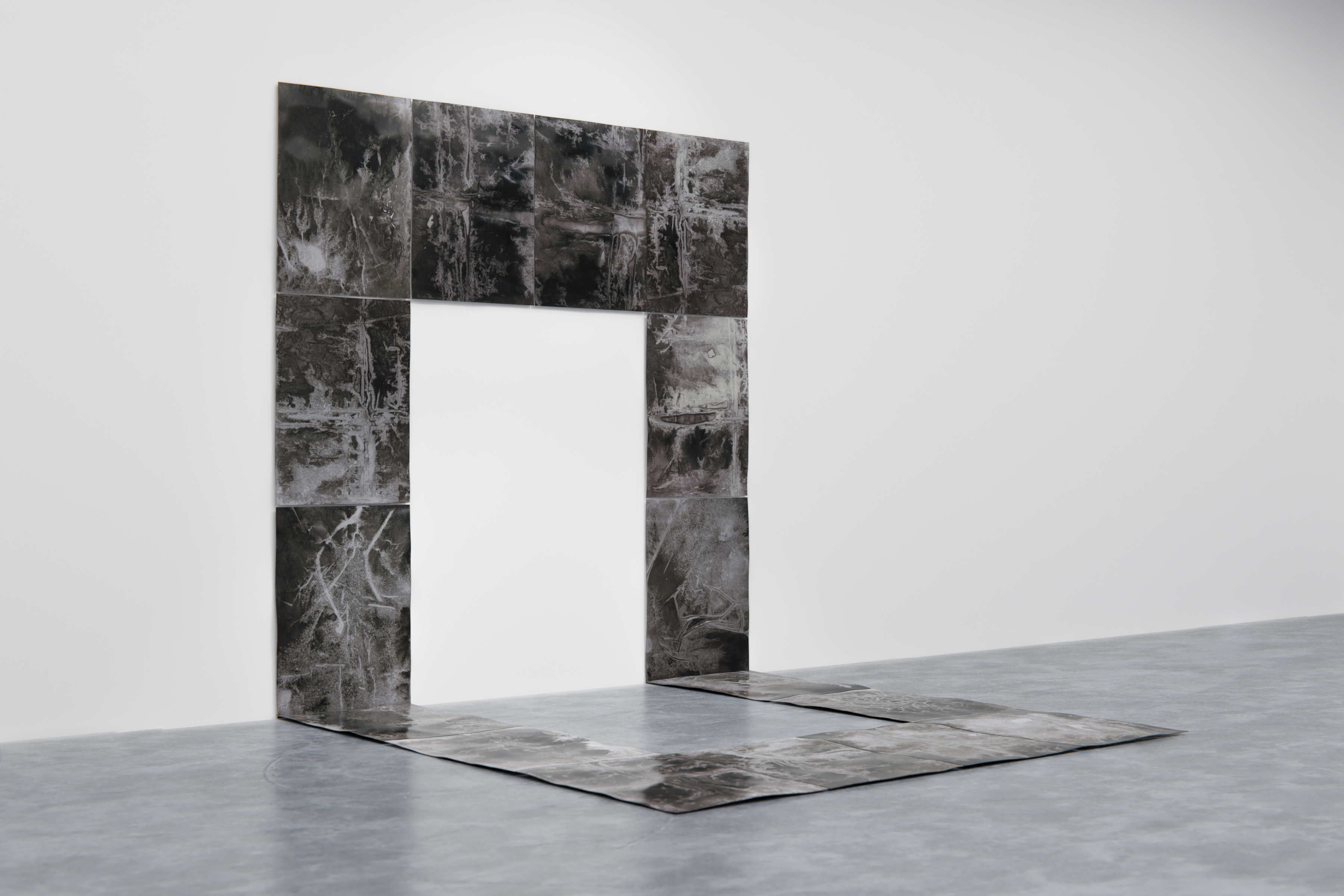
Liljana Mead Martin
Negative [Space] Interface.
Ink monoprints on paper,
mounted on panel. 2020.
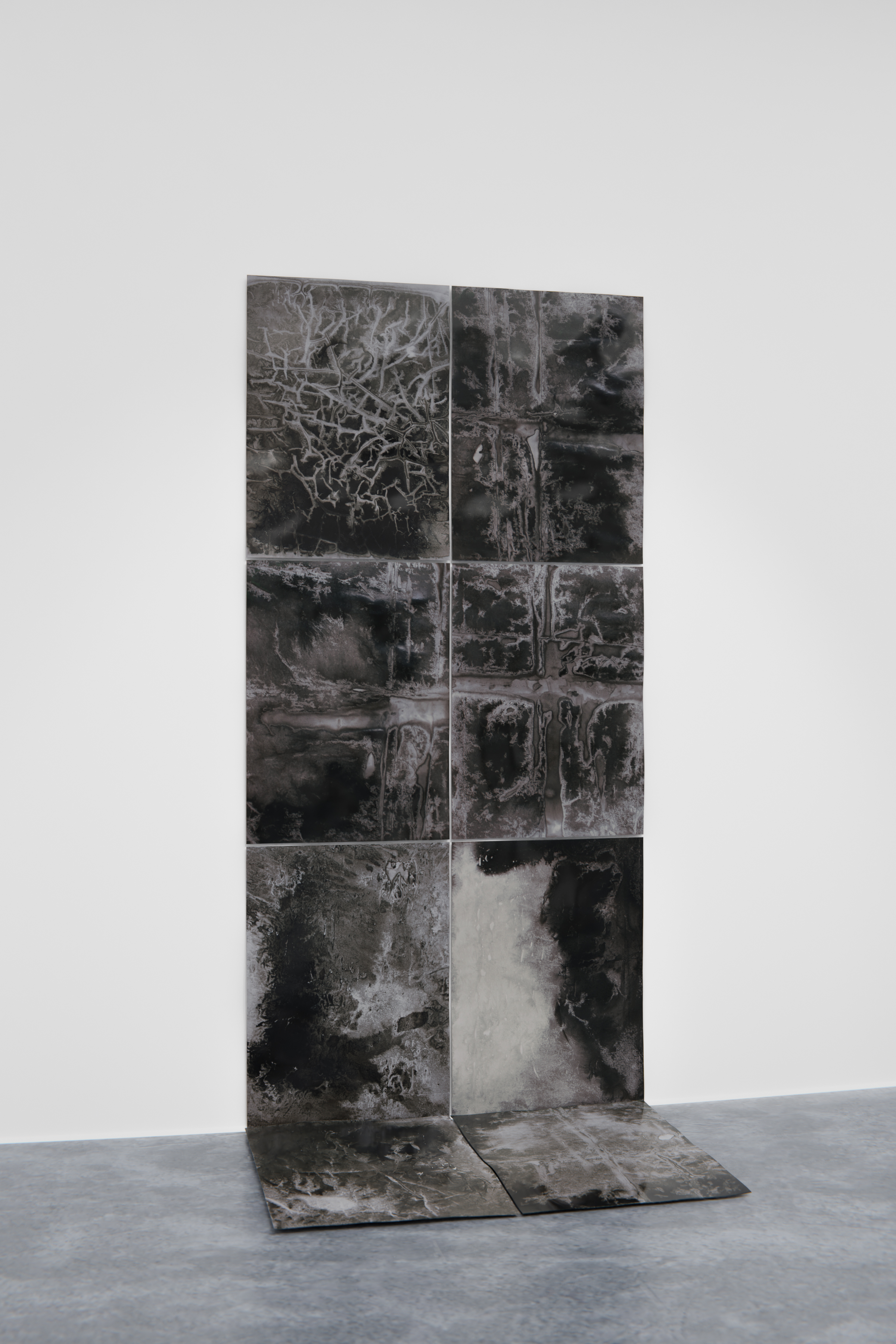


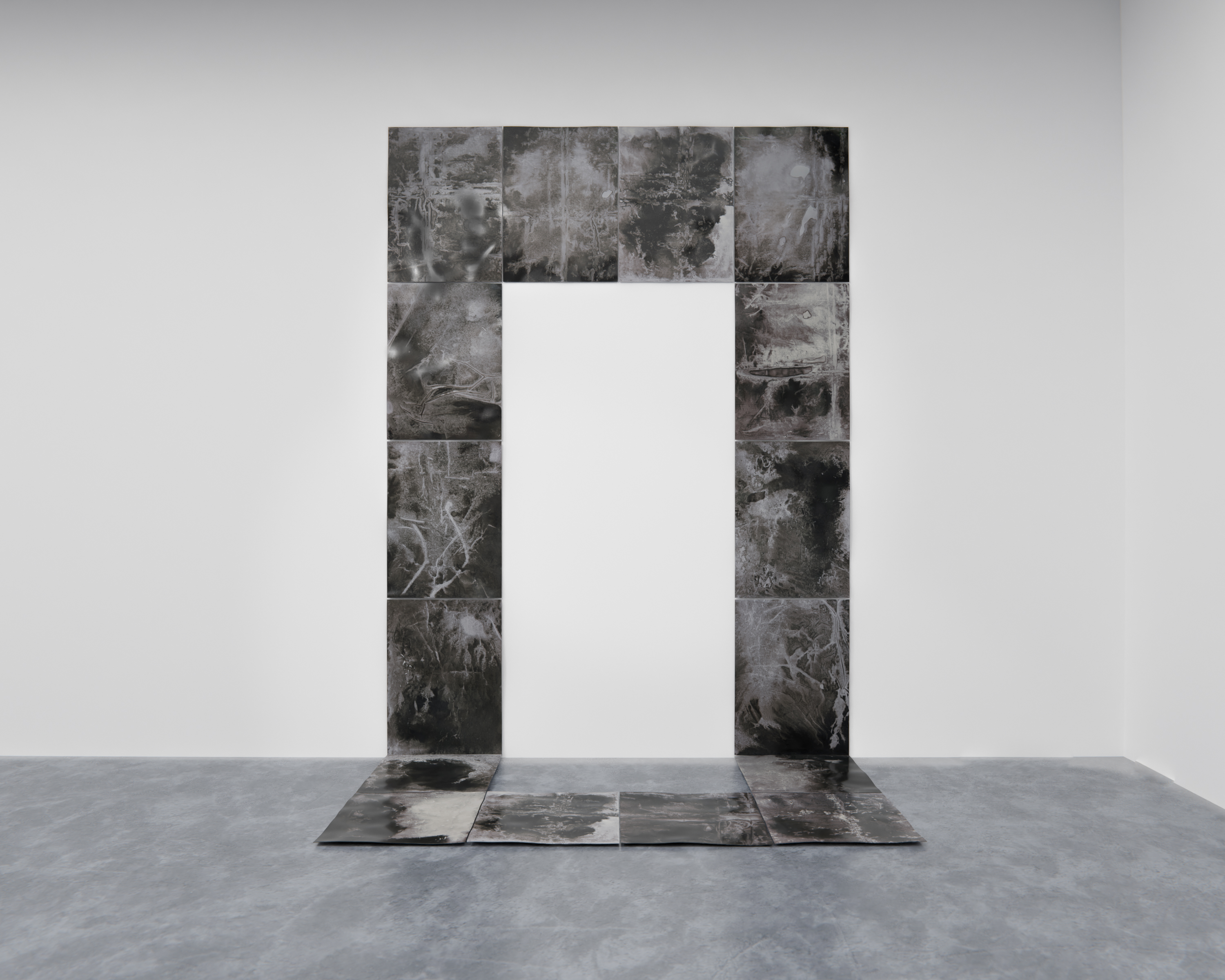
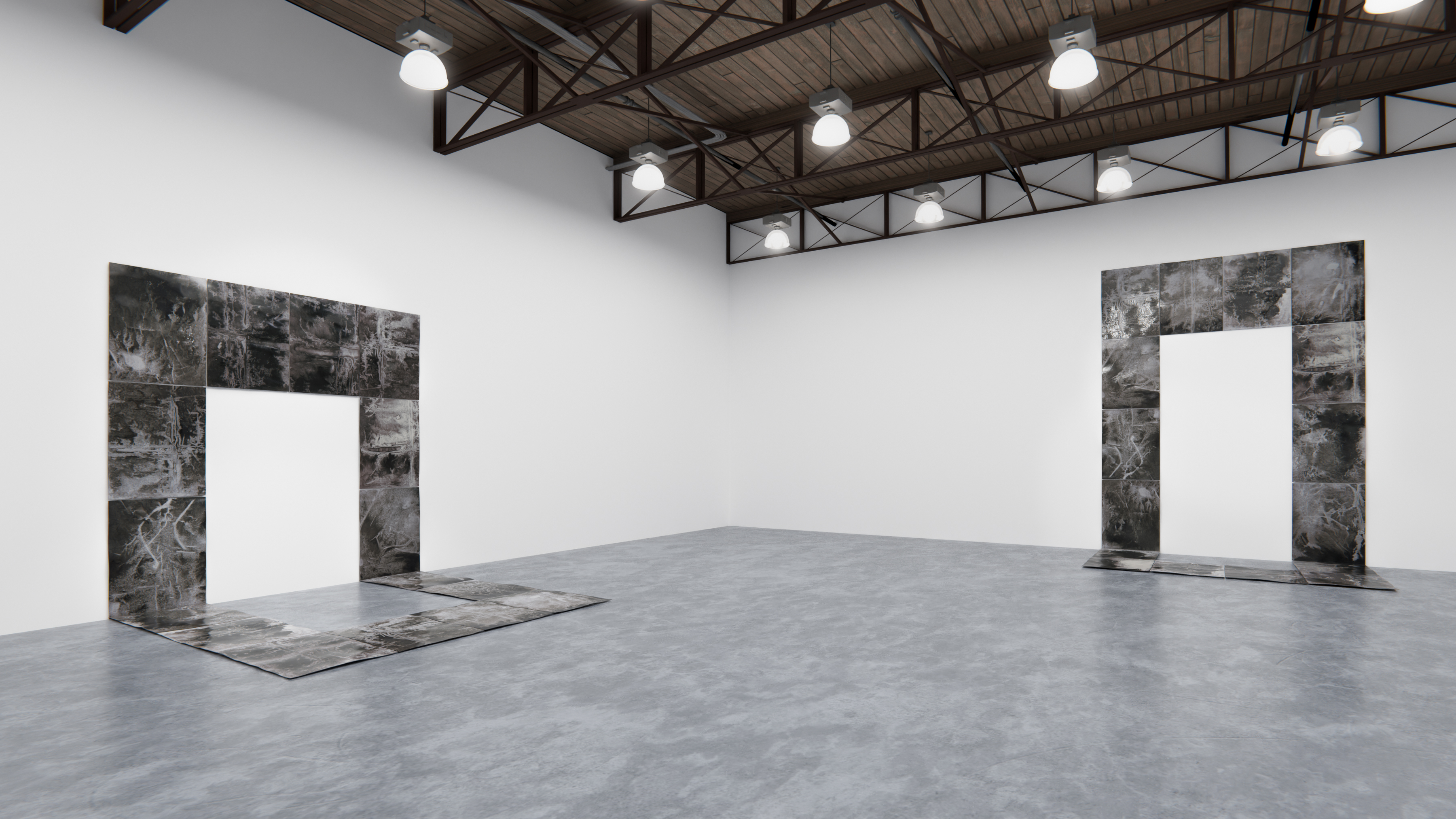
Liljana Mead Martin
Negative [Space] Interface.
Ink monoprints on paper, mounted on panel. 2020.
BIOMASS: I wanted to begin by asking, what are you showing for this exhibition?
Liljana Mead Martin: For the BIOMASS exhibition I am showing an installation of works titled Negative [Space] Interface, made out of a series of ink monoprints on paper that I created in my sister’s garage in the summer of 2020. In the process of making them I’m re-using sheet plastics as a water barrier to slow the drying process and then creating compositions from the accumulated works to reflect on building development practices in forest fire zones.
B: Could you describe how you made them, what was your process?
LMM: I usually develop processes in tandem with making works, so for this project I was thinking about reusing plastics to create a barrier of some kind and see what effects develop. In early covid I noticed all the plastic being created and placed between people as a layer to isolate from each other amidst contagian—although necessary, I think it’s a challenge for people to be sensorially separated like that. I was placing ink and water directly onto plastic on the floor and pressing thick paper over it, getting the paper really saturated, then letting it dry slowly for a few days. Depending on humidity and temperature, they render different kinds of effects.
B: And what research informed the rest of this installation?
LMM: This year I began a new body of research, stemming from a curiosity in west coast forests and some zoning terminology as well, called the Wildland Urban Interface or WUI zones. It’s basically a transition zone between what is considered wildland and new areas of human development, often these are on the fringes of more densely populated areas, in wilder areas. Communities in these zones are very vulnerable to wildfires and in simple terms their presence disrupts an existing ecology. But it’s complicated, because as cities become more expensive people want to have their own space - causing drift and sprawl in areas that can’t necessarily sustain that many people. I mean, it takes tons of energy and resources to extend the grid. I was drawing from that research to create these works that suggest architectural shapes, specifically thresholds to homes or buildings.
B: I think there might be some connection between the forested area meeting the urban area, and a monoprint, where some kind of mark meets the ground of the paper.
LMM: Yeah! With this particular work, the research into zones that have an immediate relationship to environmental degradation and human development processes... it brings into question practices of living. That is pretty much always what I’m interested in, questioning ways of living. Wherever the ground is disturbed, either through cultivation or extraction is an interesting place to think about, it’s the opposite of escapism. These could probably be called a lot of things, but since I’m making up the processes as I go, I like monoprint because it suggests that only one exists, which is true. I like making a slightly new mark every time.
B: How then would you describe what you want to reveal with these works?
LMM: The works are sort of behaving like architecturally shaped charred landscapes. And the history that situates any conversation about land, like the displacement of indigenous peoples, multiple kinds of extractive industries, deforestation, these things have created a tinderbox situation in regions where land may be sort of affordable. And these problems won’t be solved if we don’t pursue a variety of alternatives. Individually the artworks aren’t meant to be symbolic, but cumulatively the installation and compositions create a threshold or a tension. There is no escape from the conditions that have been created here, so it seems that they need to be collectively addressed. I’m only an artist so I work with the feelings, ideas and experiences that emerge from making and sharing artwork. To me that means facing some of the more frightening realities and dealing with them directly.

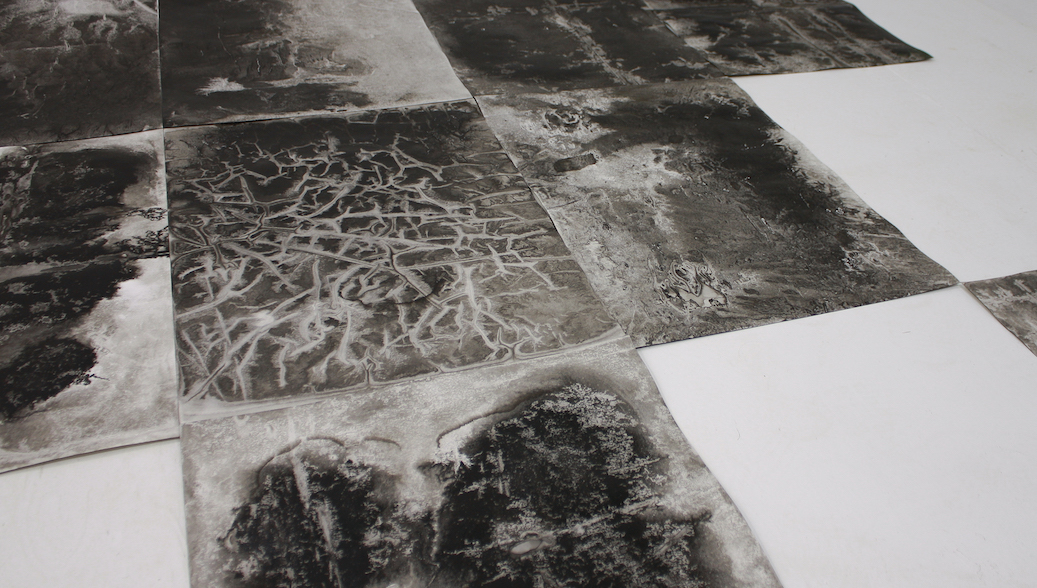
Liljana Mead Martin.
Studio work in process.
2020.
B: The works have a dark affect. How do you connect the charred wood of forest fires with the emotional or despondent characteristics of urban development?
LMM: Hm… I’m coming from a perspective that considers what can be done with a flawed system, and the practical applications of that are not always easy. When it's summer no one wants to think about the winter. Why would you think about discomfort when you're comfortable? But for myself, if I start by asking questions from a darker place, I begin to feel like if I can deal with those difficult emotions first, everything else becomes more workable. Wandering through those grounds requires some fearlessness and I am trying to cultivate that all the time in my work and life. I understand for most people that may seem a bit extreme and maybe this work comes across as antagonistic to the viewer, but I think it's real. Like, where would you go if your home burned down? Where would you go mentally? For anyone who has not experienced it, this could be a three second contemplation. There was a period of time when I was making this work, when the sky just completely hazed over, and you couldn’t see the sun - massive forest fires were blazing across the west coast and a weather system was taking their smoke around the whole world. I thought that was powerful, though it felt kind of earie and surreal. These works are quite simply preparatory questions. Isn’t it important to consider its impacts and lifespan of what one creates? Maybe there is more to be learned from what we build and lose than mustering the strength to just rebuild it all again. Maybe a better understanding of loss would offer different perspectives on what we stand to gain. I’m not suggesting that all pain needs to be memorialized or anything like that, or that we should dwell on negatives of our current time. But I do think we could contemplate it just enough to motivate a different approach. With these works, it’s really about the negative space and a minimal architecture that takes into account the conditions in which it's created.
B: The installation seems to connect these practical architectures—like housing, development—with a more metaphorical, societal architecture. How does society frame nature or wilderness? Would a different frame illuminate a different relationship to materials and matter?
LMM: Yes. I think so. I’m trying to glean a different perspective on this cross-section between ways of living, material and land. If your own way of living is through a process of restoration or stewardship, that would fill the frame and completely change ones relationship to loss. If your way of living involves the consumption of many many resources and doesn’t give anything back, then this frame, this charred landscape is your home. It’s about questioning what the cost is to everyone or everything else, not just yourself. It’s not really about what I might personally think is the best course of action, there is space to be guided by the material, the research, and delve deeper into questions that I feel are important to ask.
Liljana Mead Martin is a visual artist based in Vancouver. Her artwork reframes material ecologies of digging, cultivation and deep time with a focus on the ways by which we grow sensitivity and resilience to dark ecologies and toxic habitats. Martin’s work has been exhibited at The Klondike Institute for Arts and Culture (Dawson City Yukon Territory), Artscape Gibraltar Point (Toronto Island ON) Dynamo Arts Association (Vancouver), CSA Space (Vancouver), Recess (NYC) and the Nanaimo Art Gallery (Vancouver Island). Her forthcoming solo exhibition at Wil Aballe Art Projects (Vancouver) will be opening in March 2021.
